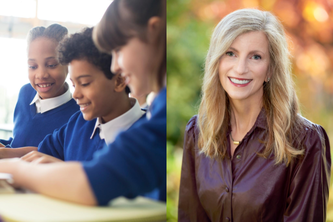
Every classroom from kindergarten to college is full of stories, told and untold.
Stories allow people to share their experiences, and the main experience Mark Vagle studies is social class.
Vagle, an associate professor of elementary education, emphasizes that stories about social class and other markers of difference—including race, gender, and sexuality—should be set in context.
“Given the deep racial struggles in society, and given that, in the U.S., class is arguably always already bound up with race, it is especially important for any examination of social class to be equally focused on race,” he explains.
Vagle is a cofounder of the CLASSroom Project, which aims to end the harmful effects of classism in schools. The project developed five principles to for change, among them the integration of social class and marginalized perspectives into the curriculum. (See all five).
The CLASSroom Project includes initiatives like the one-day workshop Vagle leads called The Other Side of Poverty in Schools, in which most participants come from K-12 schools. Vagle and his team are also invited to work in schools.
“We have seen, over time, how teachers begin to plan, honor, and draw upon a wider range of student background knowledge,” says Vagle. “Language starts to change.”
The CLASSroom Project has now provided an estimated 4,000 educators in Georgia, Minnesota, and surrounding states with support for understanding class and using class-sensitive teaching practices in their classrooms.
Learn about similar work at the University of Minnesota to close the opportunity gap.
See Vagle’s blog post “Working to Achieve Educational Equity” for more.
- Categories:
- Education





